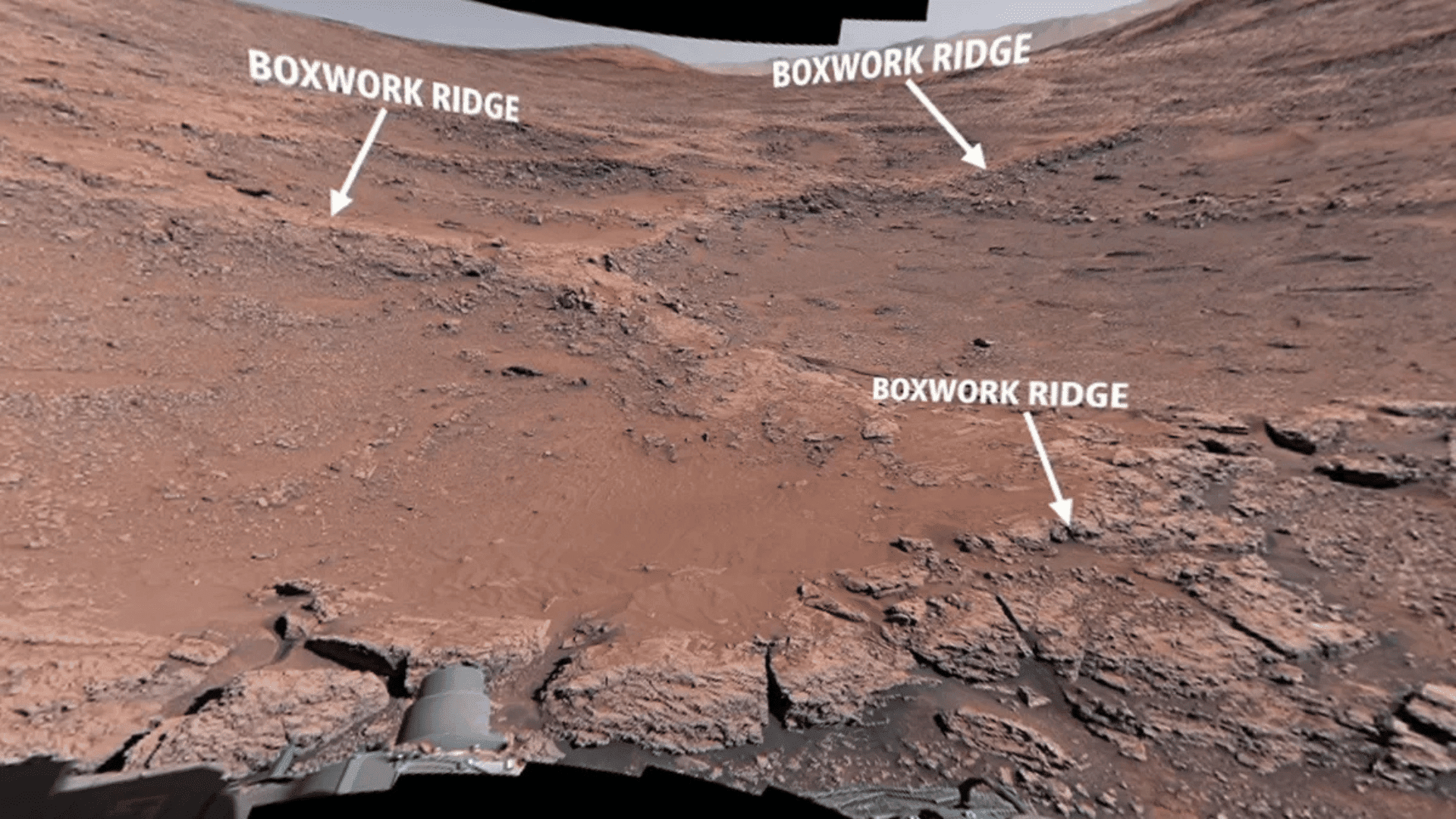NASA’s Curiosity Mars rover has captured the first close-up images of Martian “spiderwebs” or zig-zagging ridges left behind by ancient groundwater. Studying these structures could provide more insights into Mars’ watery past and whether the planet once held extraterrestrial life.
Curiosity Rover Captures ‘Spiderwebs’

The web-like structures consist of criss-crossing ridges of mineral-rich rocks, spanning up to 12 miles across. Until now, these features have never been studied up close.
Smaller boxwork structures can also be found on the walls of caves on Earth, which were formed from a similar process to stalagmites and stalactites. Researchers suggest the same process created the structures on Mars.
“The bedrock below these ridges likely formed when groundwater trickling through the rock left behind minerals that accumulated in those cracks and fissures, hardening and becoming cementlike,” NASA representatives wrote in a statement. “Eons of sandblasting by Martian wind wore away the rock but not the minerals, revealing networks of resistant ridges within.”
According to Live Science, Curiosity is currently exploring a series of boxwork on the slopes of the 3.4-mile-tall Mount Sharp at the heart of the Gale Crater. The rover set its sights on this area in November 2024 and arrived there in early June 2025.
The area was sought out for study because the unique ridges only appear in this area and not anywhere else on the mountain, which has puzzled researchers. After drilling some sample rocks around the web-like ridges, the rover found they contained calcium sulfate, a salty mineral left behind by groundwater.
“These ridges will include minerals that crystallized underground, where it would have been warmer, with salty liquid water flowing through,” Kirsten Siebach, a Curiosity mission scientist at Rice University in Houston who has been studying the area, previously stated. “Early Earth microbes could have survived in a similar environment. That makes this an exciting place to explore.”
In addition to releasing the first close-up images of the site, NASA also released an interactive video that enables 3D exploration of the area.